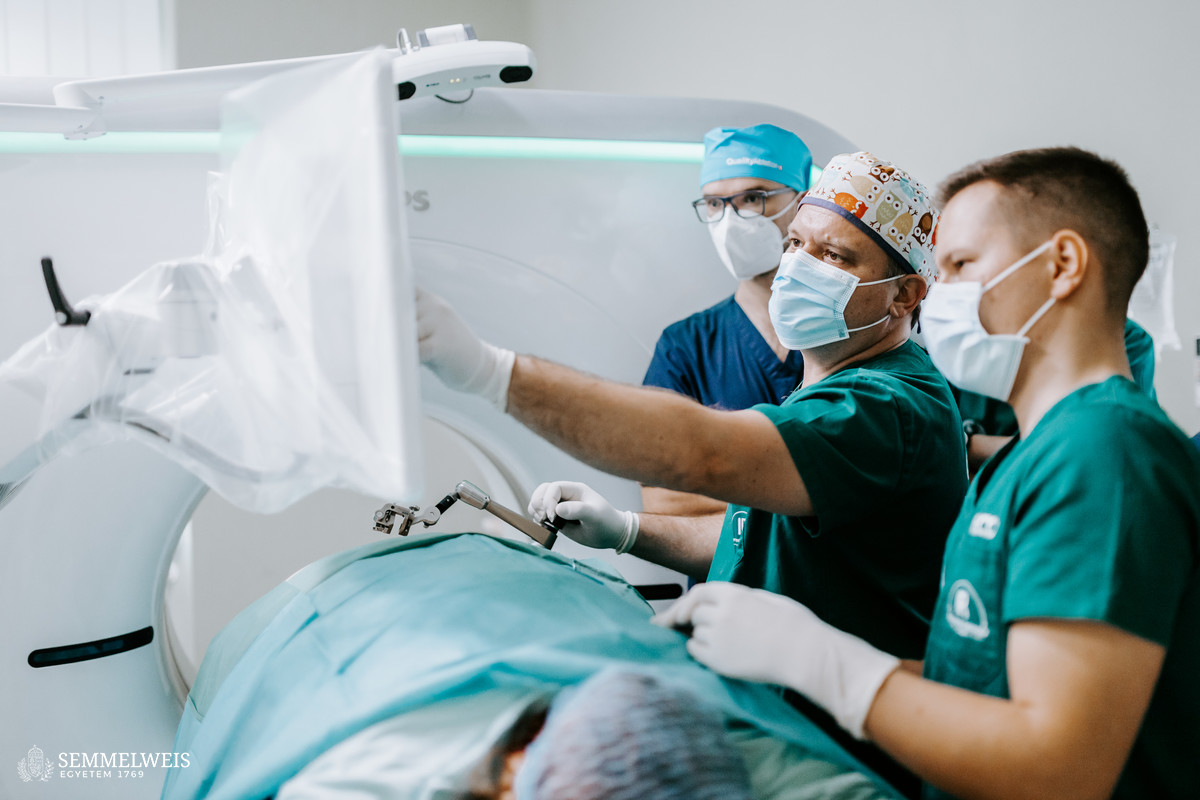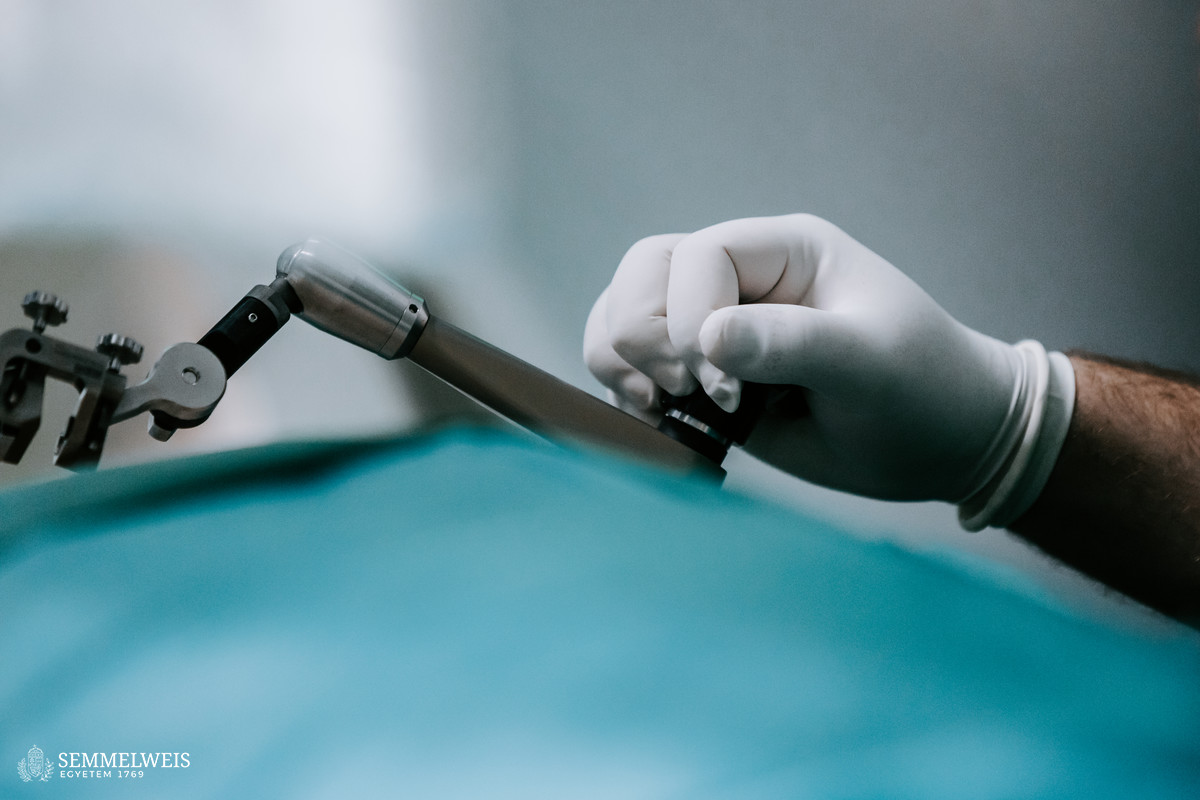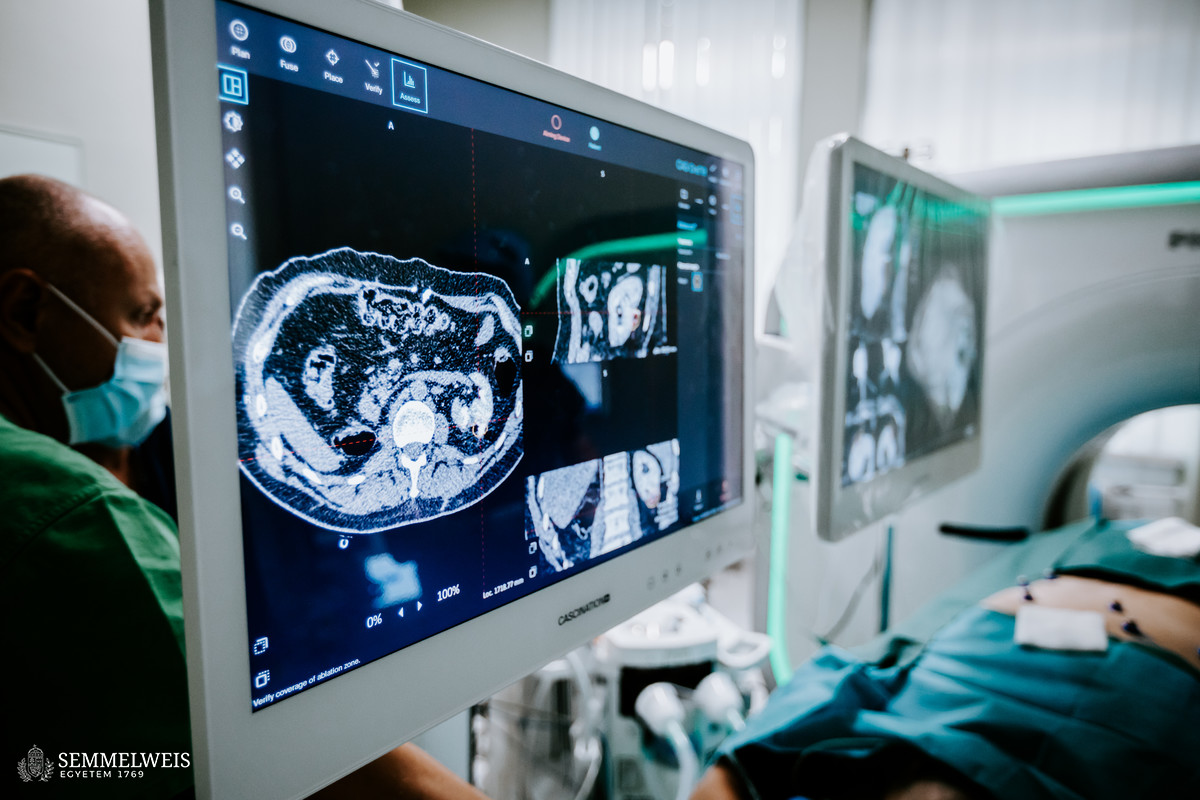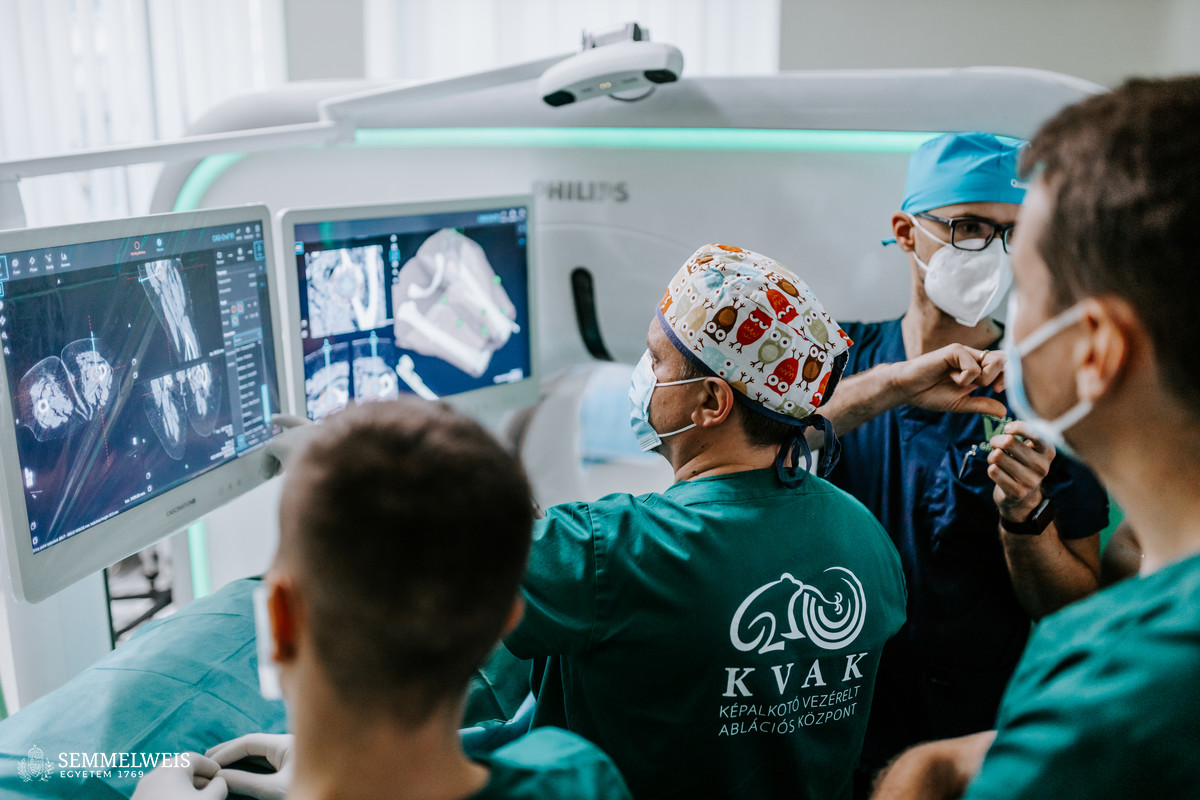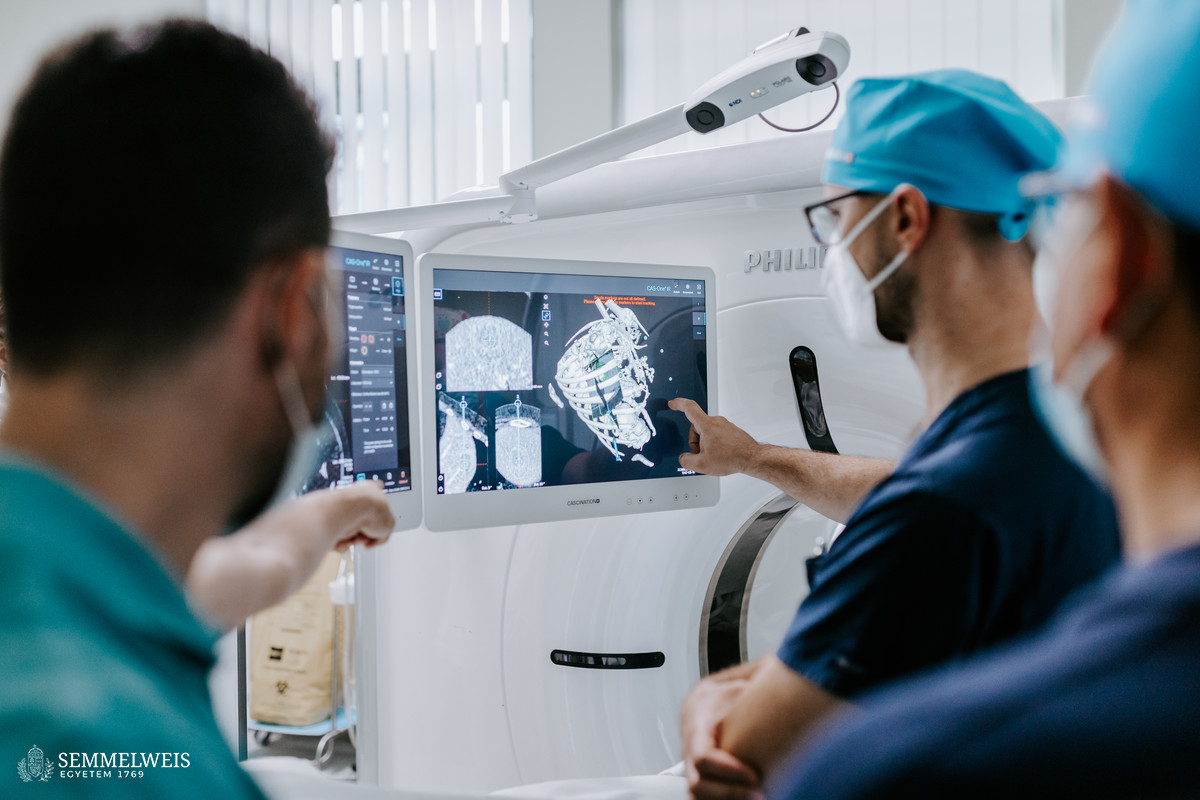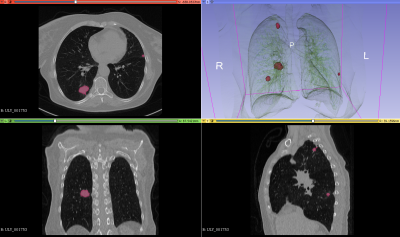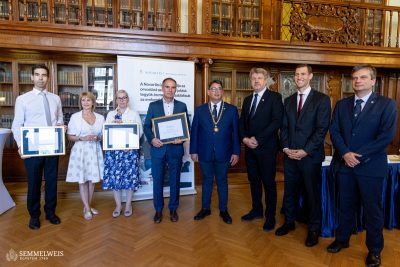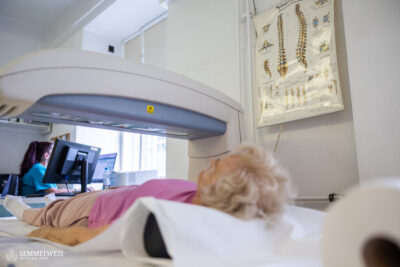A follow-up CT scan one month after the operation has already demonstrated the success of the new surgery with the so-called stereotaxic navigation system in the first patient with metastatic liver cancer to undergo surgery. The 67-year-old woman underwent the procedure during the first days of November at the Onco-Interventional Unit at Semmelweis University. The “planning and navigation system” not only shows the way to approach the tumours, but also guides doctors to exactly where the tumours are located. The navigation system allowed the specialists to plan the treatment more precisely, pinpoint the position of the needle insertion for the tumour treatment, thus reducing the time of the operation and allowing the patient to recover faster after surgery. She spent only two days in the clinic.
For more than 20 years, so-called thermoablation procedures have been carried out in Hungary, in which tumour tissue is heated using radio frequency or microwaves to destroy it. A newly introduced method in Hungary is cryoablation, where tumour cells are destroyed by freezing, a procedure we performed for the first time in Hungary in February,”
recalled Dr. Pál Ákos Deák, Head of the Onco-interventional Department at Semmelweis University. The associate professor added that these interventions were also previously performed under CT or ultrasound guidance, but a great experience was required on the part of the surgeon for the positioning of the needles, and there was no possibility of immediate, precise control of the success of the treatment. This device makes it even easier to plan the positioning of the needles prior to the procedure and simplifies their placement with the help of a targeting device.
“It is important that the patient has to be under anaesthesia, so that the body is immobile, so that the needle can be inserted exactly where it was planned, and this is confirmed by a follow-up CT scan. At the end of the procedure, thanks to a new software, the monitoring program compares the plan with the result and provides a colour-coded, accurate 3D image of the result, indicating any areas where there may be live tumour cells, which we can then treat,” he explained the CT-guided ablation procedure.
The procedure can be an important additional treatment in cancer care, but it is always up to the oncology teams to decide whether a patient needs surgery, medication or other therapeutic intervention. Depending on the location and size of the tumour or metastasis, a single treatment may be sufficient, but multiple interventions may be needed for successful therapy.
In Hungary, in addition to cardiovascular problems, cancer is the leading cause of mortality, so it is particularly important to broaden the oncology services available at the university and expand our clinical portfolio, to be able to apply new technologies where we train the doctors of the future”,
Dr. Béla Merkely, Rector of Semmelweis University emphasized, adding that it is important that oncological surgery is increasingly based on the approach of removing all affected tissue while retaining as much of the intact organ as possible to perform its function. The future lies increasingly in minimally invasive surgery with minimal stress for the patient, such as stereotactic navigation, as opposed to major abdominal surgery. These result in faster recovery with shorter hospital stays, all without incision. Currently, 43 centers in 15 countries around the world use this stereotactic navigation system. The equipment, worth more than 100 million HUF, was purchased by the university from its own resources.
Orsolya Dávid, translation by Rita Kónya
Photo by Bálint Barta – Semmelweis University
